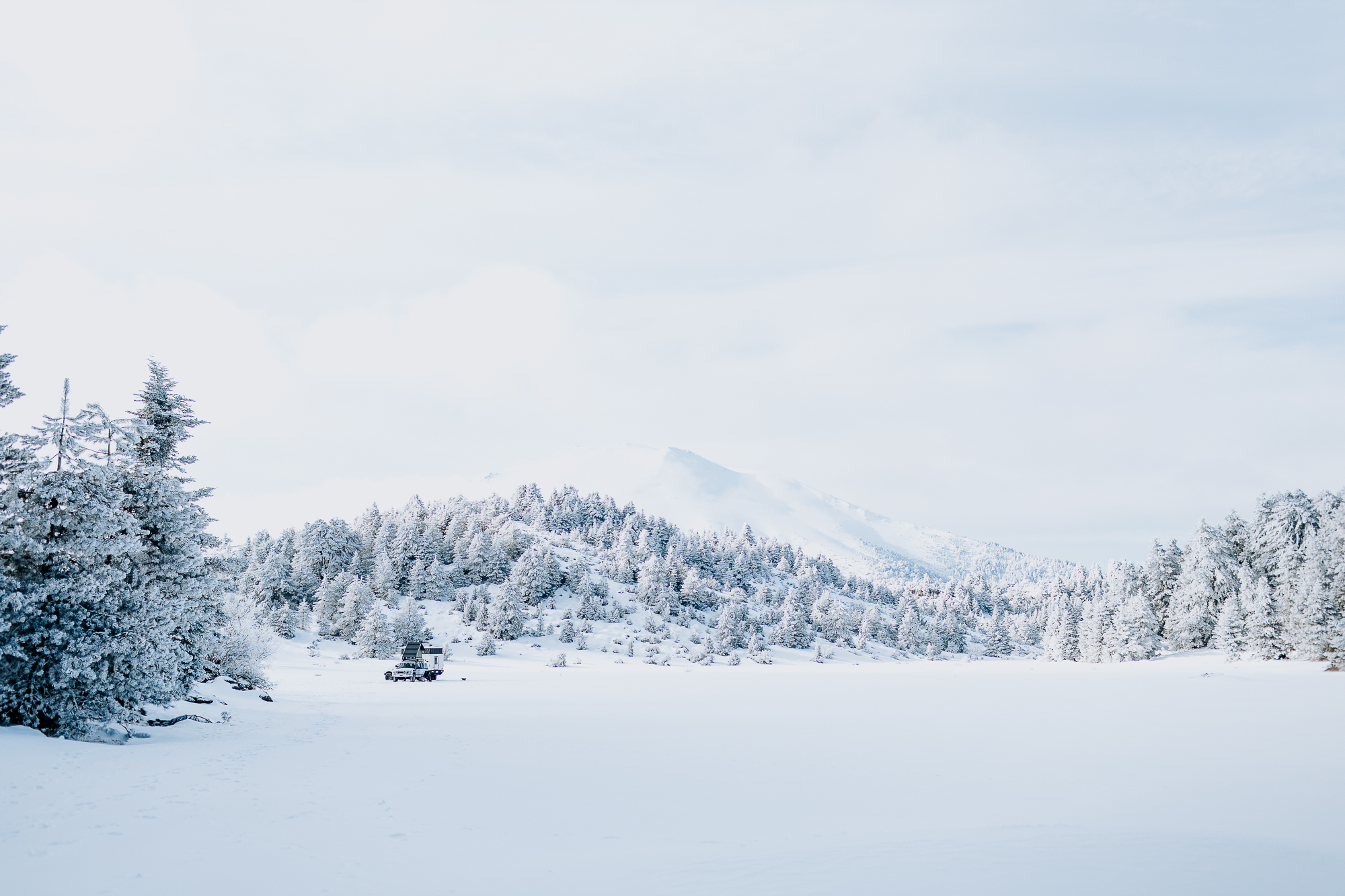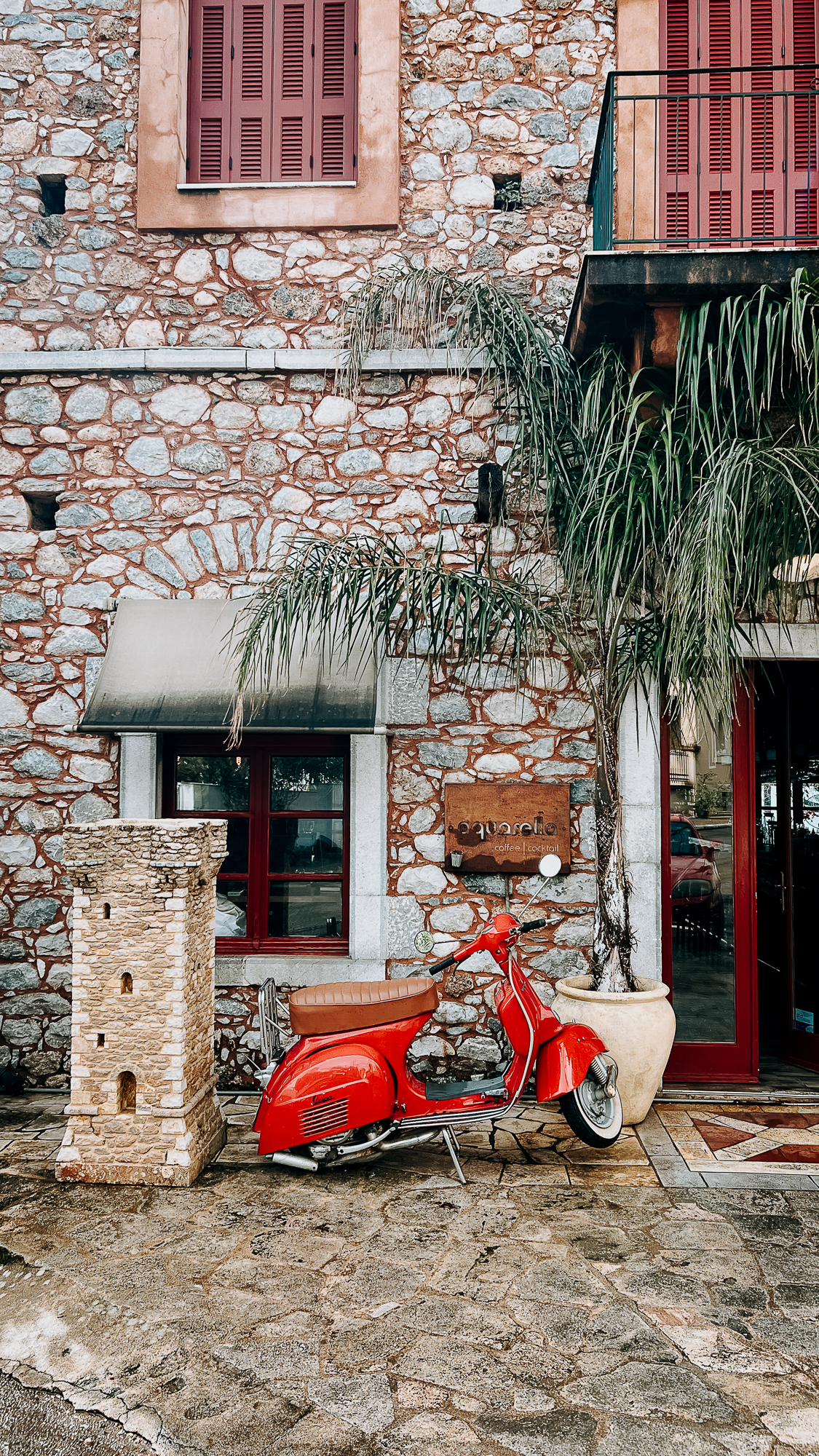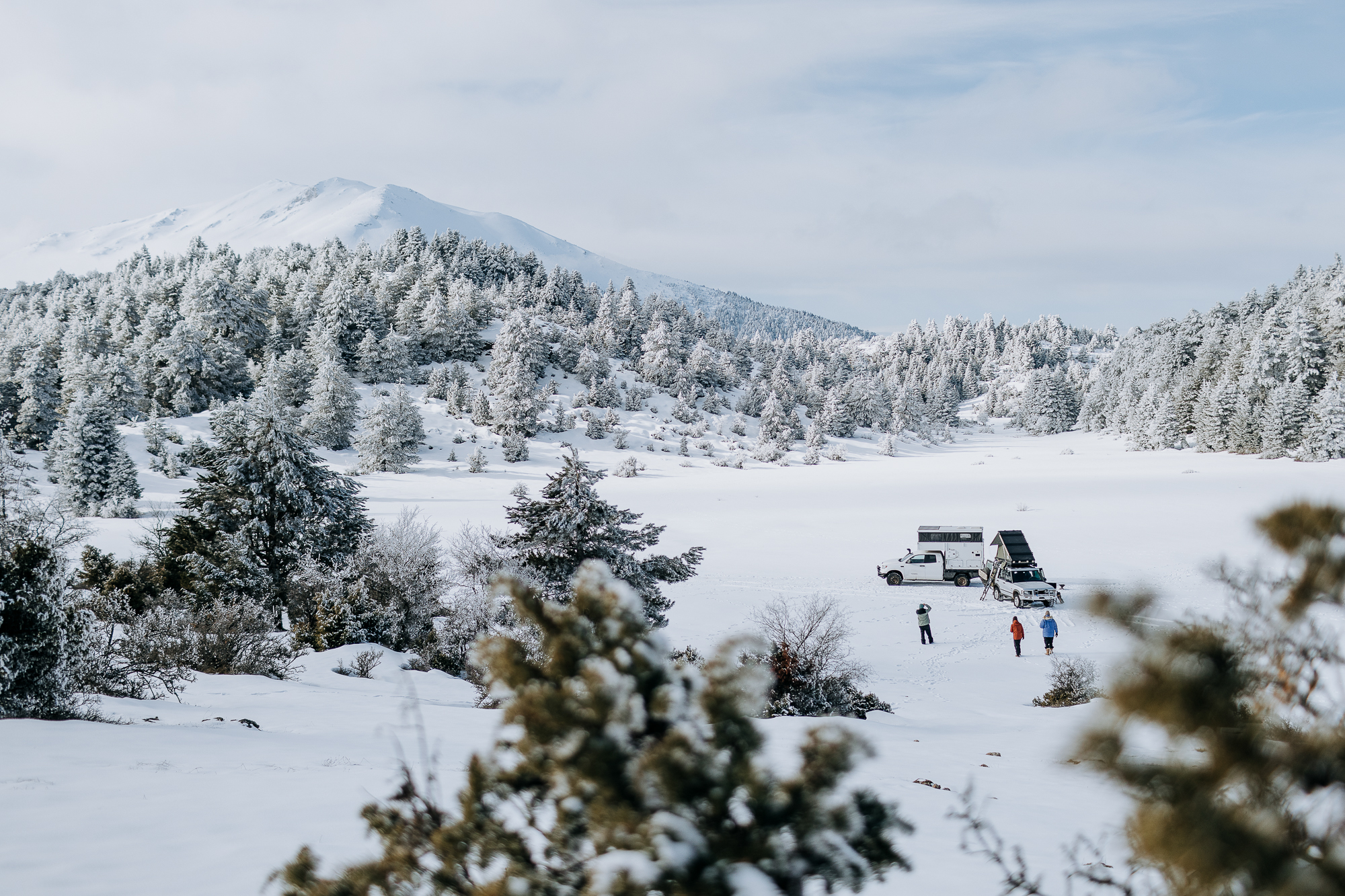Photography by Richard Giordano
On the busy streets of Xanthi, I spot a tiny lobster. She’s swinging an air lasso to “Gangnam Style” as bass pumps through a gargantuan roadside speaker. Located in northern Greece, the city of Xanthi hosts some of the most popular Apokries events in the country, which celebrate the festive season preceding Lent with masquerades, parades, and plenty of opportunities to eat, drink, and dance. The tiny lobster was, in fact, a costumed Grecian girl taking part in the children’s parade. I later saw her gathered with friends, enjoying a paper tray of loukoumades, sticky bite-sized donut balls topped with sprinkles—the perfect carnival treat.
From the confetti to the green spray paint that stained my boots, the pirates, butterflies, and rhinestoned faces, I reflected on the morning’s chilly end-of-February parade. The playful spirit was contagious, so we stayed a while, parking up at a bar to enjoy a hot, frothy cappuccino. Our time in-country was quickly coming to an end, and, arriving in low season, it was a humbling reminder that idyllic white sand beach and blue water Santorini images are merely a small fraction of what a country has to offer. From its ski hills to toll roads, freddo espressos, and mountainous peninsulas, here are 10 things to know about overlanding Greece.
Yes, It Can Snow in Greece
Home to 25 ski resorts, Greece receives snowfall between November and April, with the northern regions receiving the brunt of it. Parked at the Ziria Ski Center, we watched skiers and snowboarders cruise up the mountain’s only lift, taking in unobstructed views of the Megali and Mikri Ziria peaks, which top out at over 2,000 meters. Sledding and snowmobile rides were in full swing but quieted down during our sub-zero night camped in a nearby valley. The nice thing about snow in Greece is if you want to avoid it, in many areas, you can.

Visit Greece in the Shoulder Seasons (But Don’t Rule Out Low Season)
Greece has a Mediterranean climate characterized by hot, dry summers, mild, wet winters in the southern lowland and island regions, and cold winters with snow in the mountainous areas (as mentioned above). Spring and autumn offer the best combination of warm temperatures and quiet beach days. Winter months (November to March) bring pros and cons as the weather ranges greatly from t-shirt-appropriate to thunderstorms, days of rain, and potentially flooding in some areas. This is the quietest time to travel through the country, but for some, it can be too quiet, with restaurants and cafes closed for the season and islands amidst their winter slumber. For those who don’t mind the quiet, off-season brings 50 percent discounts at many archeological sites and empty camp spots, snow pursuits, and cozy café visits.
Eighty Percent of Greece is Mountainous
It may come as a surprise that Greece, celebrated for its islands and coastline, is also one of the most mountainous countries in Europe. Recognized in Greek mythology as the official home of the Greek gods, Mount Olympus is perhaps the most iconic peak in the country, topping out at over 9,500 feet of elevation. Meanwhile, extending from the Albanian border and stretching southeast into central Greece, down the Peloponnese peninsula, and throughout Crete, the Pindus mountain range is often referred to as the country’s “backbone” or “spine.” Much of Greece’s coastline, especially on the Peloponnese peninsula, is characterized by a thin strip of beach backed by towering ridges filled with cypress and pine.
A Few Helpful Phrases to Get You Started
Although English is widely spoken, it is considerate to begin with a few Greek phrases.
Hello: Yassas
Good day: Kaliméra (ka-lee-mera)
Thank you: Efharistó (ef-kha-ri-stoh)




The Peloponnese Region is Popular with Overlanders
Surrounded by the Ionian and Aegean Seas, the Peloponnese peninsula is a destination in and of itself, with plenty of things to do and places to visit. Four finger-like land projections reach toward Crete and North Africa, each offering camping, swimming, SUPing, and sunbathing opportunities thanks to long stretches of beach, hard-to-access coves, and rocky outcrops. There are also numerous cave systems, such as Kastania, Diros, and Franchthi, some of which are accessed by boat. The rusty Dimitrios shipwreck on Selinitsa Beach is worth a visit to speculate on its rumored history as a cigarette-smuggling vessel chugging between Turkey and Italy.
Many of Greece’s most legendary ancient sites are located on the Peloponnese, including Epidaurus, where you can climb the steps of a 4th-century BC amphitheater, imagining a visit to the healing center dedicated to Asclepius, the god of medicine. There’s also Ancient Olympia, Mycenae—home to Agamemnon, the Trojan War hero—Mystras, and the hillside Temple of Apollo Epicurius. For something slightly newer, pop into Koroni, Methoni, or Pylos for castle views and fortress history, or climb the 999 steps leading to Nafplion’s Venetian-built Paladmidi Fortress.

Visa and Vehicle Import Permit Requirements
As Greece is part of the European Union and the Schengen zone, US or Canadian citizens with a valid passport may travel throughout the country for a maximum of 90 days within a 180-day period. Fortunately, Greece borders non-Schengen countries (Turkey, Albania, North Macedonia), so if you need to exit the Schengen zone to buy more time in Europe, it is easy to do so. As per the European Commission, the admission of non-EU vehicles intended for re-export (tourist vehicles, in other words) is valid for six months. If you need to leave your vehicle temporarily, there are several storage options near Athens, including campgrounds that offer long-term parking. If you have chosen to travel through Greece by fly and drive, 4WD vehicles are available from the usual suspects: Kayak, Rhino, Sixt, Avis, Enterprise, and the local Off-Road Greece 4×4 outfit.
Calling All Coffee Lovers
Our initial late-summer jaunt through Greece introduced us to the ubiquitous freddo cappuccino and freddo espresso, which you’ll be hard-pressed not to see clasped in the hands of locals no matter where you are. The espresso version sees a shot or two of espresso shaken in a mixer with ice, then strained and served over fresh ice cubes. The freddo cappuccino is essentially the same but served with a thick layer of cold, frothy milk on top (sugar or a sprinkle of chocolate or cinnamon is optional). You’ll also find Greek coffee on the menu. Typically costing a couple of euros, this version is prepared by scooping freshly ground coffee beans into a metal cup placed on a single gas burner. The water is then boiled, creating a thick layer of froth, and served hot.
Wild Camping in Greece: Know the Rules
Officially, wild camping in Greece is not allowed. In high season, the country sees a barrage of tourists, including a ton of European campervanners, all destined for the perfect parkup. Campers have been fined by the police for overnighting in restricted areas. Clear signage is posted in popular areas to indicate if camping is prohibited.
In low season, however, things quiet down, and wild camping is often tolerated, especially in areas that aren’t as frequented—for example, spots that require four-wheel drive or are located via unpaved tracks. Like most European countries, Park4Night and iOverlander remain the go-tos for camp spot scouting in Greece. Usually, comments left in the apps will indicate whether people have been turned away. The country also has a good network of paid campgrounds and camper stops.


Pack it Out—Even if It Isn’t Yours
Aside from a few campgrounds here and there, nearly every camp spot in Greece was littered with trash. Discarded waste ranged from plastic bottles to cigarette butts, baby wipes, pieces of fishing nets, paper cups, glass bottles, and more. The European Environment Agency recognizes that waste management is one of the most pressing problems in Greece, and it shows. Fortunately, initiatives are moving in the right direction, such as one from fishers across the country promising to recover marine plastic with their nets. In the meantime, one of the most impactful things we can do as overlanders is pick up and bag trash. Fortunately, garbage bins aren’t hard to find as plenty are parked along the roadways.
Driving: Tolls and Ferries Can Add Up, Plan Accordingly
European fuel is on the expensive side if you’re using North America as a point of comparison. During our time in Greece (and at the time of writing), gasoline hovered around an average of €1.80 per liter, while diesel went for approximately €1.54 per liter. You’ll find 95 octane (equivalent to 91 octane in North America) at most pumps.
Greece operates toll and non-toll roads. You will likely encounter a toll road at some point, especially if you’re on a tight timeline. Fees range from less than a euro to over 10 euros per toll, but the price is determined by vehicle height. The main thoroughfare from Athens to Thessaloniki can be spendy (up to €15 for each toll for vehicles over 2.2 meters). If traveling through the north—where different height classifications apply—prices decrease significantly.
The Greek Islands are worth reconsidering if you’re on a budget or driving a bigger rig. Ferry costs can total hundreds of dollars and may be better saved for a fly-in holiday. Rumored to be an idyllic stopover during a tour of the Peloponnese peninsula in Southern Greece, tiny Elafonisos island is a good alternative.

Read: Bikepacking Crete :: Top 10 Gear Picks
Our No Compromise Clause: We do not accept advertorial content or allow advertising to influence our coverage, and our contributors are guaranteed editorial independence. Overland International may earn a small commission from affiliate links included in this article. We appreciate your support.


